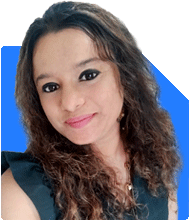Hi I'm 36 with the income of 60K ..but due to some unexpected situation I was locked with 30K lakh debt...need your help and suggestion to over come this debt and start invest in next three years ..so that I can save for my retirement around 75 to 100lakhs.
Ans: Hi, it's commendable that you want to address your debt and plan for a secure retirement. You're 36, earning Rs 60,000 per month, but currently facing a debt of Rs 30 lakh. Let’s work on a plan to help you overcome this debt and start investing for a retirement corpus of Rs 75 to 100 lakh in the next three years.
Analyzing Your Debt
Debt can be overwhelming, but a structured approach can help:
Debt Amount: Rs 30 lakh
Monthly Income: Rs 60,000
Creating a Debt Repayment Plan
The first step is to create a structured debt repayment plan:
List Your Debts: Make a detailed list of all your debts, including interest rates and EMIs.
Prioritize High-Interest Debt: Focus on paying off high-interest debts first to reduce the overall interest burden.
Debt Consolidation: If possible, consolidate multiple debts into a single loan with a lower interest rate.
Budgeting for Debt Repayment
A strict budget will help you allocate funds for debt repayment:
Essential Expenses: Identify and list all essential monthly expenses like rent, groceries, utilities, and transportation.
Discretionary Spending: Cut down on non-essential expenses like dining out, entertainment, and shopping.
Allocate Funds: Dedicate a significant portion of your income to debt repayment, aiming to clear it as soon as possible.
Generating Additional Income
Consider ways to increase your income to accelerate debt repayment:
Part-Time Jobs: Look for part-time or freelance work to supplement your income.
Skills Utilization: Utilize any skills or hobbies to generate extra income, such as tutoring, writing, or consulting.
Selling Assets: Consider selling any non-essential assets or belongings to raise funds for debt repayment.
Building an Emergency Fund
While focusing on debt repayment, it’s also crucial to build an emergency fund:
Small Savings: Start by saving a small amount each month, even if it’s just Rs 1,000 to Rs 2,000.
Goal: Aim to build an emergency fund covering at least three to six months of living expenses.
Liquid Assets: Keep your emergency fund in a liquid account like a savings account or liquid mutual fund for easy access.
Investing for Retirement
Once your debt is under control, you can focus on investing for retirement:
1. Understanding Retirement Needs
Estimate the amount needed for a comfortable retirement:
Current Expenses: Calculate your current monthly expenses.
Inflation Adjustment: Consider inflation to estimate future expenses.
Retirement Corpus: Determine the total corpus needed to generate Rs 75,000 to Rs 100,000 per month post-retirement.
2. Starting Systematic Investment Plans (SIPs)
SIPs are a disciplined way to invest in mutual funds:
Regular Investment: Start SIPs once you have cleared a significant portion of your debt.
Equity Mutual Funds: Invest in equity mutual funds for higher returns over the long term.
Gradual Increase: Gradually increase your SIP amount as your income grows and debt reduces.
3. Diversification
A diversified portfolio helps manage risk and maximize returns:
Equity Mutual Funds: Allocate a significant portion to equity mutual funds for growth.
Debt Mutual Funds: Include debt mutual funds for stability and regular income.
Balanced Funds: Invest in balanced funds for a mix of equity and debt, reducing overall risk.
Professional Guidance
Seek advice from a Certified Financial Planner (CFP) to optimize your investments:
Customized Plan: A CFP can create a customized investment plan based on your financial goals and risk tolerance.
Regular Reviews: Regularly review your investment portfolio with your CFP to make necessary adjustments.
Insurance Needs
Ensure you have adequate insurance coverage to protect yourself and your family:
Life Insurance: Adequate life insurance coverage to provide financial security to your family.
Health Insurance: Comprehensive health insurance to cover medical expenses and protect your savings.
Surrender Policies: If you hold LIC, ULIP, or investment-cum-insurance policies, consider surrendering and reinvesting in mutual funds for better returns.
Tax Planning
Efficient tax planning can save you money and increase your returns:
Tax-Saving Mutual Funds: Invest in ELSS funds for tax benefits under Section 80C.
Long-Term Capital Gains: Plan your investments to take advantage of lower tax rates on long-term capital gains.
Tax-Advantaged Accounts: Utilize tax-advantaged accounts like PPF and NPS for additional tax benefits.
Emergency Fund
Having an emergency fund is crucial for financial security:
Liquidity: Ensure it covers 6-12 months of living expenses.
Accessibility: Keep it in easily accessible accounts like savings accounts or liquid funds.
Peace of Mind: Provides financial security during unexpected situations.
Planning for Inflation
Inflation erodes purchasing power over time. Here’s how to counter it:
Growth Investments: Invest in assets that grow faster than inflation, like equity mutual funds and stocks.
Regular Reviews: Regularly review and adjust your investments to stay ahead of inflation.
Monitoring Progress
Regularly monitoring your investment progress is crucial:
Annual Review: Conduct a detailed review of your portfolio annually with your CFP.
Adjustments: Make necessary adjustments based on performance and changing financial goals.
Stay Informed: Keep yourself updated on market trends and investment options.
Future-Proofing Your Investments
Future-proof your investments to ensure long-term financial security:
Diversified Portfolio: Maintain a diversified portfolio to manage risk.
Professional Guidance: Seek regular advice from a Certified Financial Planner.
Flexibility: Be flexible with your investment strategy to adapt to changing market conditions.
Final Insights
Dealing with debt and planning for retirement can be challenging but achievable with discipline and planning. Focus on clearing your debt through structured repayment, budgeting, and increasing income. Once debt-free, invest systematically in mutual funds and diversified portfolios to build a substantial retirement corpus.
Stay disciplined, seek professional guidance, and regularly review your financial plan to stay on track. Best of luck on your financial journey!
Best Regards,
K. Ramalingam, MBA, CFP,
Chief Financial Planner,
www.holisticinvestment.in


























